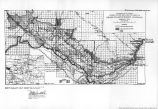| OCR Text |
Show -27- been perfected, in round figures, over one million acres. Figuring a water duty of 5^ acre feet per acre, this takes from the Colorado River system, 5,550,000 acre feet per annum, which with about 50,000 acre feet being used in Nevada, would bring the total use of water in the lower basin to some 8,750,000 acre feet. This total is 1,500,000 acre feet more than is allotted to the lower basin by the Colorado River Compact, without computing the amounts used in Utah and New Mexico within the lower basin. Your committee also asserted that it was the intention of Arizona to derive a revenue from all hydro-electric energy which would be developed upon the Colorado River, and that it was the intention of the State, in fixing a valuation on property to be taxed, to include not only the actual investment made in dams, power houses and appurtenant works but also to place a valuation upon the power site and the fall in the river To review the long discussion and the many proposals and counter proposals would occupy too much space in this report. We will therefore limit ourselves to a review of the propositions which were before the conferees when they took their recess on December 31, 1926. Briefly stated they are as follows: Water 1. It was the general consensus of opinion of all the conferees that the upper basin states are entitled to have reserved to them, under the Compact, 7,500,000 acre feet of water for beneficial, consumptive use under the conditions, qualifications and restrictions imposed by the Colorado River Compact. |
| Source |
Original book: [State of Arizona, complainant v. State of California, Palo Verde Irrigation District, Coachella Valley County Water District, Metropolitan Water District of Southern California, City of Los Angeles, California, City of San Diego, California, and County of San Diego, California, defendants, United States of America, State of Nevada, State of New Mexico, State of Utah, interveners] : California exhibits. |



















































































































































































































































































































































































































